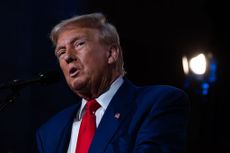How Spot Bitcoin ETFs Work: Are They Right for You?
Investors can now invest in bitcoin through traditional investment accounts rather than owning the cryptocurrency outright.


Bitcoin has had a phenomenal journey from a niche digital currency to a trillion-dollar asset class in a 15-year period.
The January 2024 approval of 11 spot bitcoin ETFs was a watershed moment, presenting investors with a gateway to being able to invest in bitcoin through their traditional investment accounts. We expect this will continue to boost broader investor adoption of bitcoin and attract investors who previously did not want to open a digital wallet or a digital asset custodial account. The approval of 11 products all at once can seem overwhelming, so the following guide can be used as a tool for investors who are interested in adding these types of investments to their portfolio.
Understanding spot bitcoin ETFs
An exchange-traded fund (ETF) is a type of pooled investment security that can be bought and sold much like an individual stock. The main difference between an ETF and a mutual fund is that though a mutual fund is also a pooled investment, it trades only once a day after markets close. An ETF can be structured to track anything from the price of an individual commodity to a large and diverse collection of securities. ETFs can even be designed to track specific investment strategies.

Sign up for Kiplinger’s Free E-Newsletters
Profit and prosper with the best of expert advice on investing, taxes, retirement, personal finance and more - straight to your e-mail.
Profit and prosper with the best of expert advice - straight to your e-mail.
A spot bitcoin ETF is a breakthrough financial vehicle that tracks the current price of bitcoin, providing a simplified investment approach without the complications of direct ownership. In contrast to mutual funds that trade once at the end of the day, these ETFs operate similarly to stocks, allowing for real-time trading, adding flexibility to investment strategies.
Spot bitcoin ETFs operate by securing and holding actual bitcoin, stored in secure digital wallets by custodians. These custodians play a crucial role in safeguarding assets, employing sophisticated security measures such as cold storage to mitigate theft risks.
Bitcoin trades 24/7 throughout the world, but remember, the 11 spot products that were approved will trade only when markets are open, even though their underlying investment will be trading all of the time. For example, if you are looking at the spot price on a weekend, you will not see the ETF price changing until markets open the coming week.
A closer look at the approved spot bitcoin ETFs
The selection of SEC-approved spot bitcoin ETFs comes with various expense ratios and fees, tailored to meet different investment profiles. To entice investors, some offer limited-time fee waivers or reductions. Some of those ETFs include:
- ARK 21Shares Bitcoin ETF (ARKB). No fees for six months, until hitting $1 billion in assets.
- Fidelity Wise Origin Bitcoin Trust (FBTC). Fees waived until July 31, 2024.
- Franklin Bitcoin ETF (EZBC). No fees until August 2, 2024, or until reaching $10 billion in assets.
- Invesco Galaxy Bitcoin ETF (BTCO). Zero fees for the first six months, or until $5 billion in assets is accumulated.
- Others, including the Bitwise Bitcoin ETF (BITB) and the Grayscale Bitcoin Trust (GBTC), have opted not to offer fee waivers.
Investors should carefully consider all fees and terms before making investment decisions and do research or talk to a professional before choosing to invest. Since these products are designed to track the performance of spot bitcoin, we recommend not solely focusing on fees to make a decision on which one to buy. If the product is low-cost but doesn’t track very tightly to the performance of bitcoin, then you are incurring a “cost” in addition to the stated fee.
Risk assessment and considerations
Investors must carefully weigh the risks associated with spot bitcoin ETFs, including regulatory uncertainties, custody arrangements, fees and price volatility. This is still an emerging asset class and will likely have big price moves day-to-day that we don’t think can be timed.
If clients express interest in having bitcoin exposure, we will generally recommend about 1% to 2% of the portfolio to start. This allows investors to acclimate to the high volatility. We emphasize that even if bitcoin were to hit zero, with a 1% to 2% portfolio allocation, it would not significantly impact their overall portfolio return in the long run. With an asset that can move in short periods of time +100%, a small allocation will still provide benefits to overall performance of the entire portfolio. A little can go a long way with this type of investment.
If clients want to have the ability to move bitcoin to a wallet, they won’t be able to do that with an ETF. Some investors prefer to be able to control the token vs having it wrapped in an ETF with other investors. Think of it this way: You can buy a gold coin and store it on your own, or you can buy an ETF with gold as its sole holding.
If at any point there are unrealized losses that an investor wants to harvest for tax reasons, they are subject to abiding to the same wash sale rules of securities. If you sell the bitcoin ETF, the way the IRS rules are written, you have to stay out of it for 30 days if you want to book the loss on this transaction. Selling one spot bitcoin ETF and buying another that invests identically is likely going to be a violation of the wash sale rule.
It is unclear at this point how custodians will monitor this on investor 1099s and how it will be enforced. If they own the token directly and harvest it, they can buy it back immediately under current tax rules, which is a notable difference vs using an ETF.
A shift in sentiment
The approval of spot bitcoin ETFs signifies a significant shift in regulatory sentiment toward digital assets. While this marks a milestone, uncertainties remain regarding future approvals and regulatory developments.
As the digital asset landscape continues to evolve, informed decision-making remains paramount for navigating the complexities of this dynamic market. If you have interest in learning more, speak to your financial adviser about your risk tolerance with an investment like this and what place bitcoin may have in your portfolio.
Halbert Hargrove Global Advisors, LLC (“HH”) is an SEC registered investment adviser located in Long Beach, California. Registration does not imply a certain level of skill or training. Additional information about HH, including our registration status, fees, and services can be found at www.halberthargrove.com. This blog is provided for informational purposes only and should not be construed as personalized investment advice. It should not be construed as a solicitation to offer personal securities transactions or provide personalized investment advice. The information provided does not constitute any legal, tax or accounting advice. We recommend that you seek the advice of a qualified attorney and accountant.
Related Content
Get Kiplinger Today newsletter — free
Profit and prosper with the best of Kiplinger's advice on investing, taxes, retirement, personal finance and much more. Delivered daily. Enter your email in the box and click Sign Me Up.

Brian Spinelli is based in Halbert Hargrove’s Orange County and Long Beach offices. His responsibilities encompass running the firm’s investment committee as well as advising individuals and institutions on their investment and wealth advisory needs. Brian was named to HH’s management team in 2012. He earned his Bachelor of Arts in Business Administration – Finance from Loyola Marymount University in 2002 and his MBA from LMU in 2005. He is a CERTIFIED FINANCIAL PLANNER™ professional. Halbert Hargrove is the creator of LifePhase Investing and headquartered in Long Beach, Calif.
-
 Three Ways President Trump Could Impact the Economy
Three Ways President Trump Could Impact the EconomyThe Letter Some of Trump's top priorities could boost economic growth, but others risk fueling inflation.
By David Payne Published
-
 Average Health Care Costs by Age: Can You Afford It?
Average Health Care Costs by Age: Can You Afford It?Expect to pay more as you age. We've got solutions for how to cover these costs, which can exceed $1,000 per month in your 60s.
By Adam Shell Published
-
 Will You Be Able to Afford Your Dream Retirement?
Will You Be Able to Afford Your Dream Retirement?You might need to save more than you think you do. Here are some expenses that might be larger than you expect, along with ways to ensure you save enough.
By Stacy Francis, CFP®, CDFA®, CES™ Published
-
 More SECURE 2.0 Retirement Enhancements Kick in This Year
More SECURE 2.0 Retirement Enhancements Kick in This YearSaving for retirement gets a boost with these SECURE 2.0 Act provisions that are starting in 2025.
By Mike Dullaghan, AIF® Published
-
 Saving for Your Emergency Fund: As Easy as 1-3-6
Saving for Your Emergency Fund: As Easy as 1-3-6An emergency fund that can cover six months' worth of expenses is far easier to build if you focus on smaller goals at first.
By Anthony Martin Published
-
 The Wrong Money Question to Ask After Trump's Election
The Wrong Money Question to Ask After Trump's ElectionIf you're wondering what moves to make with a new president moving into the White House, you're being dangerously shortsighted. Here's what to do instead.
By George Pikounis Published
-
 An Investing Plan for This Year: Doing Less Can Lead to More
An Investing Plan for This Year: Doing Less Can Lead to MoreAchieve more when investing in 2025 by planning to work smarter, not harder. These three strategies can help put you on the right track and keep you there.
By David Booth Published
-
 All About Six Types of Auto Insurance Coverage
All About Six Types of Auto Insurance CoverageDo you know what your auto insurance policy covers? Here's a primer on some coverage categories, along with examples of how each type of coverage works.
By Karl Susman, CPCU, LUTCF, CIC, CSFP, CFS, CPIA, AAI-M, PLCS Published
-
 Social Security and Medicare Funding: Is the Sky Falling?
Social Security and Medicare Funding: Is the Sky Falling?Social Security and Medicare are slowly running out of money, but what does that mean for the retirees counting on them? Actually, it's not all bad news.
By Jared Elson, Investment Adviser Published
-
 What We Need to Do to Protect Retirees' Financial Security
What We Need to Do to Protect Retirees' Financial SecurityCognitive decline and aging in general put older retirees at risk of losing their financial security when they're the most vulnerable. What can be done?
By Margaret Franklin, CFA Published